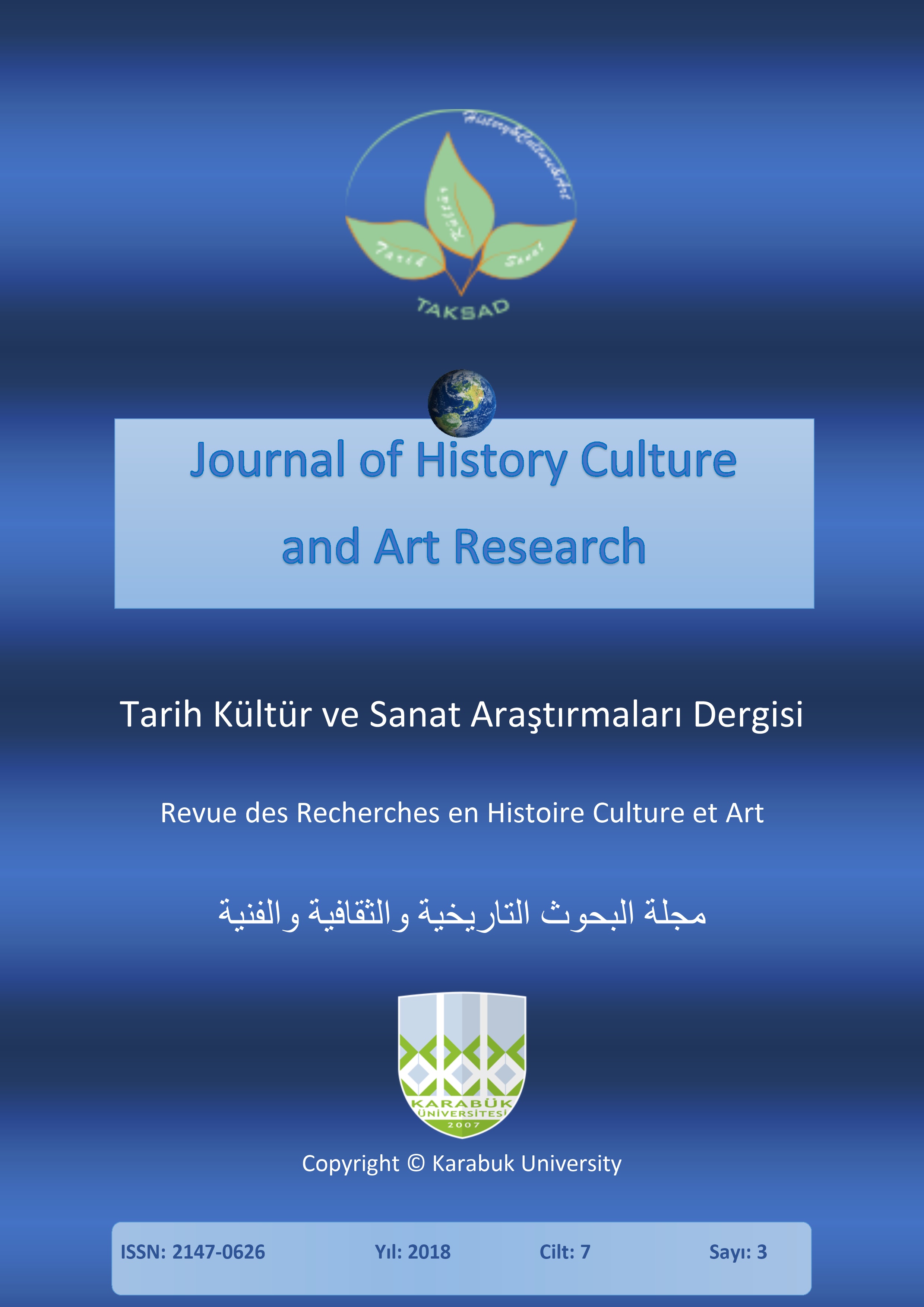Study of Mutual Effects of Neyshabur and Changsha Ceramics During the Abbasid Era (750- 1258 AD)
DOI:
https://doi.org/10.7596/taksad.v7i3.1558Keywords:
Changsha kiln, Neyshabur, Maritime silk road, Abbasid.Abstract
Located in northeast of Iran, Neyshabur was one of the most prolific centers through the Abbasids (750 -1258 AD). The center was at its peak until the invasion of the Mongols (1258 AD) to Iran. Neyshabur’s location in the course of the Silk Road, made possible the especial opportunity of the west range of cultural inter- notation with other cultural centers. Hence the artifacts of Neyshabur were partly – mostly in technical and structural respect- inspired by the eastern civilizations, namely China, and on the other side in design and idea mostly depended on the Abbasid Khalifa-Emperor capitals. The present article is a comparative study of the mutual effects and interactions between Abbasid Neyshabur and Chinese ceramics, mostly produced in Changsha region, both at the eve of prolificacy, supposed that the Neyshabur products were directly inspired by the Changsha, one of the most developed centers for producing glazed ceramics. The study was formed on four major variables; form, technique, function and ornaments. The results of the study showed that there are major identical properties technique and function in both collection, and the most significant differences can be found in the types and high quality of the ornaments and decoration in Neyshabur products. Respectively, these types and styles of decoration especially in composition strategies for occupied and empty spaces in the designs of Changsha ceramics, were mostly inspired by the Neyshabur products. The results also showed that the differences could be refereed to different pictorial motifs and designs of the two regions, and attitudes of the producers, in other words, based on the defined aims, the Changsha ceramics were meant for mass production with definite commercial and economic intention in relation to other cultural centers. In contrast, the Neyshabur ceramics were intended for a more limited range of audience, which due to the more restricted variety of themes and decoration designs were produced for specific orders.
References
Bulliet, R. W. (1973). The Patricians of Nishapur: A Study in Medieval Islamic Social History. Cambridge: Harvard University.
Chakanagi, A.; Zanganah, I.; Fadaee, S. A. & Morvarid, M. (1996). The Silk Road, Translated by The Translation Department the Islamic Research Foundation Layout, by R. Ferdowsi. Mashhad: A. Q. R.
Ettinghausen, R. & Yar-Shater, E. (Eds.). (1981). Highlights of Persian art (No. 1). Wittenborn Art Books.
Ghouchani, A. (1986). Inscription on Nishabur Pottery. Tehran: Reza Abbasi Museum.
Hasan, Z. (2005). China and the Arts of Islam. Tehran: Academy of Arts.
Kambakhsh, S. (2001). Ceramics and pottering. Tehran: Shemshad.
Karimi, F. & Kiani, M. (1985). Pottery art of Iranian Islamic period. Tehran: Official culture and teaching ministry.
Kinnier, J. (1813). A Geographical Memoir of Persian Empire. London.
Krahl, R.; Guy, J.; Wilson, J. K. & Raby, J. (2011). Shipwrecked: Tang Treasures and Monsoon Winds. Washington: Sackler Gallery.
Pope, A.u. (2001). Masterpieces of Persian art, Translated by Parviz Natel Khanlary. Tehran: Elmi Farhangi.
Rafii, L. (1999). Persian Pottery. Tehran: Yassavoli publications.
Towhidi, F. (1999). Pottery Technique and Art. Tehran: Samt.
Wikipedia (2017). Chinese Influences on Islamic Pottery. Tang Dynasty earthenware fragment with sancai glaze, end of 7th-early 8th century, excavated in Nishapur, Iran. http://en.wikipedia.org/wiki/Chinese_influences_on_Islamic_pottery
Wilkinson, C. (1973). Nishapur: pottery of the early Islamic period. New York: Metropolitan Museum of Art.
Wood, F. (2002). The Silk Road: Two Thousands Year in The Heart of Asia. Berkeley: University of California.
Worrall, S. (2009). Made in China: A 1.200 year old shipwreck opens a window on ancient global trade. National Geographic. https://www.nationalgeographic.com/magazine/2009/06/tang-shipwreck
Yang. L. (2011). Tang Dynasty Changsha Ceramics. In Shipwrecked: Tang Treasures and Monsoon Winds. R. Krahl, J. Guy, J. K. Wilson and J. Raby (Eds.), (pp. 144-159). Washington: Sackler Gallery.
Downloads
Published
How to Cite
Issue
Section
License
All papers licensed under Creative Commons 4.0 CC-BY.- Share — copy and redistribute the material in any medium or format
- Adapt — remix, transform, and build upon the material for any purpose, even commercially.
Under the following terms:
Attribution — You must give appropriate credit, provide a link to the license, and indicate if changes were made. You may do so in any reasonable manner, but not in any way that suggests the licensor endorses you or your use.
- No additional restrictions — You may not apply legal terms or technological measures that legally restrict others from doing anything the license permits.







